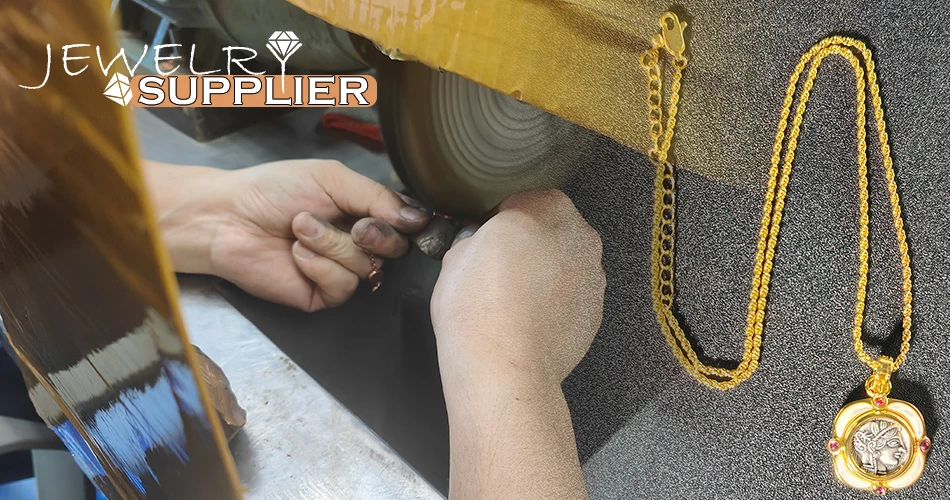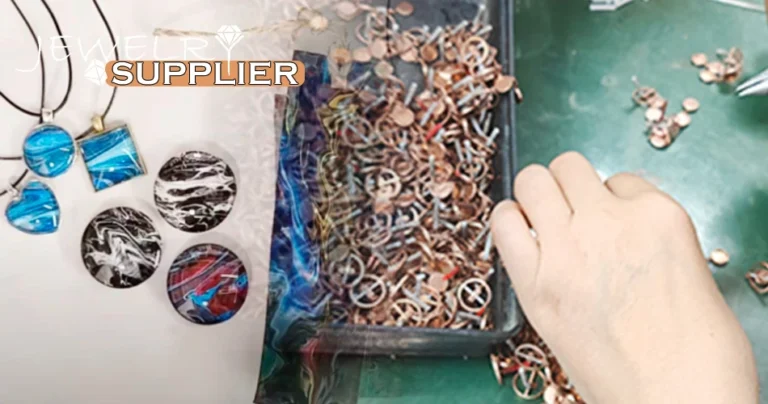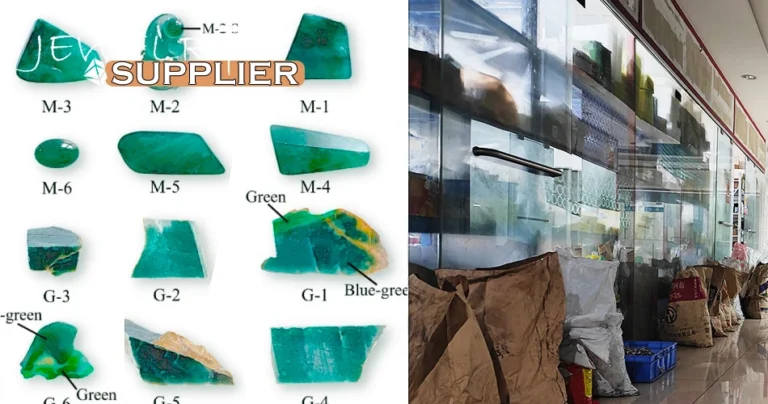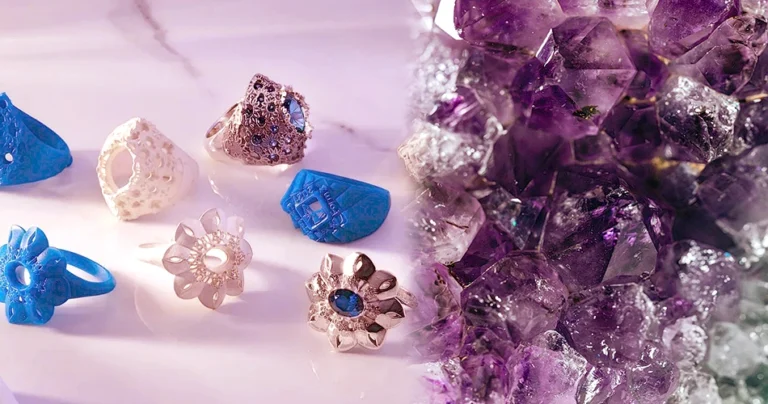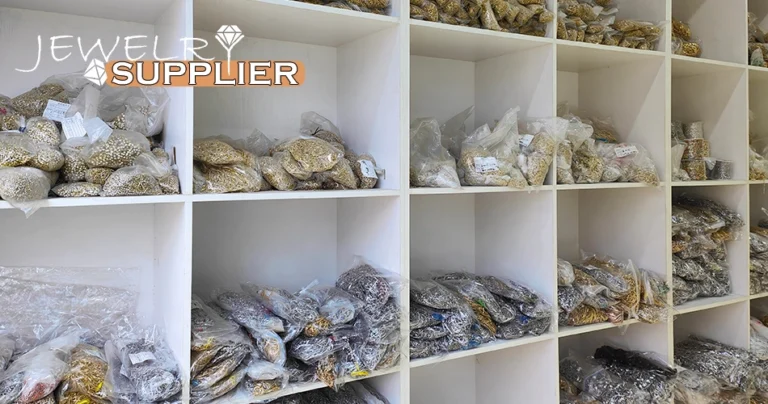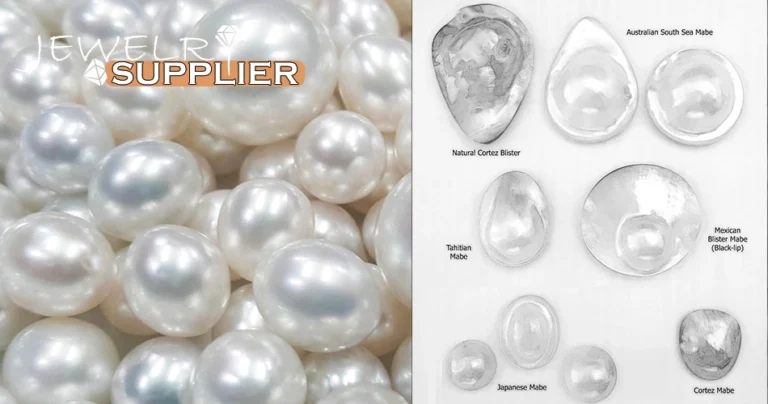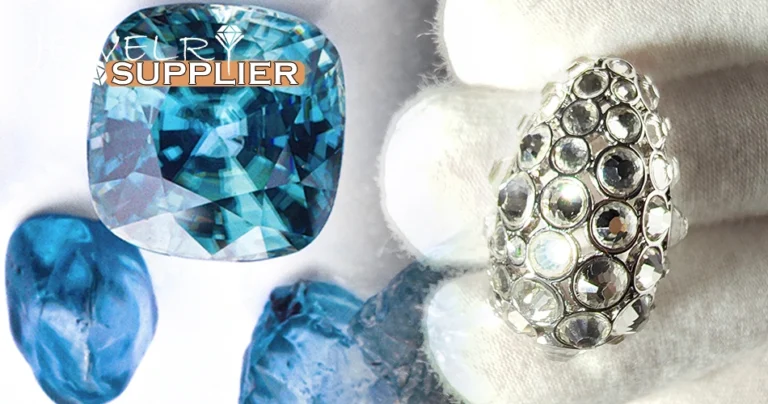Hardware Jewelry Processing Techniques
Behind every exquisite piece of hardware jewelry is a stunning journey from concept to finished product. Hardware includes a variety of materials such as gold, silver, copper, aluminum, stainless steel, and zinc alloy. Designers transform their creative inspirations into detailed design sketches using the unique properties of each material. With the assistance of CAD software, these sketches evolve into three-dimensional models, laying the groundwork for the subsequent processes. In forging and molding techniques, traditional craftsmanship merges with modern technology to create the initial form of the jewelry. Artisans shape the metal materials into preliminary forms through hammering, bending, and molding, with each step requiring exceptional skill and a deep understanding of the various hardware jewelry materials.
Go to Our home Pages – The Best Jewelry Supplier in China
The molding process involves correcting and adjusting the cast jewelry to address any issues that may arise during casting, ensuring that the shape and details meet design specifications. The sanding and polishing processes significantly enhance the surface smoothness and overall aesthetics of the jewelry. From rough sanding to fine polishing, each step demands high precision and patience to ensure a smooth surface. Advanced surface treatment techniques add further brilliance to the hardware jewelry. The application of polishing, electroplating, sandblasting, and brushing not only improves the visual quality of the jewelry but also enhances its durability and protective features. After undergoing a complex and meticulous process, hardware jewelry appears before everyone in a more perfect form.
Design Process of Hardware Jewelry
Designers create initial sketches based on popular market styles, brand positioning, or client needs, refining them into detailed designs that consider proportions, structures, and details. Using CAD software, they transform these designs into three-dimensional models, facilitating subsequent molding and processing. Simulation analysis with computer software helps optimize plans in communication with clients, confirming models based on design drawings to produce prototypes or molds for the jewelry.
After the design is completed, you need to choose the appropriate material and check the list of commonly used jewelry materials.
Forging and Molding Techniques
The forging and molding process for hardware jewelry is a traditional craft technique that shapes metal materials into the preliminary form of the jewelry through methods such as hammering, bending, and molding. Forging produces the original metal model, which serves as the foundation for subsequent mold-making. The molding process determines the shape, details, and quality of the finished jewelry. Wax molds are created using 3D printing or hand carving. These wax molds must be very precise, as they form the basis for the subsequent casting. Once the wax mold is completed, it is placed in a rubber mold to create a reusable rubber mold.
1: Hand Forging
When forging, suitable metal materials such as silver, copper, or gold must be selected, and necessary pre-treatments, such as cleaning and annealing, are conducted to improve the material’s plasticity. The metal material is heated to an appropriate temperature, making it soft and easy to work with. Different hammers and tools are used to strike the heated metal to form the desired shape. Pliers and molds are utilized to bend the metal into the desired design. Tools such as chisels and files are employed for detailing and finishing the jewelry. For mass production of hardware jewelry, metal molds must be created. If metal molds are required, the general shape is typically first achieved through forging. Precision machining is carried out using CNC machines to ensure mold accuracy. Necessary heat treatments, such as quenching and tempering, are performed to enhance the hardness and toughness of the molds.
2: Mold Making
The original metal model created through forging serves as the foundation for subsequent mold-making. The forged original model is placed into a rubber mold to create a reusable rubber mold. For large-scale production, the original model can be used to produce metal molds.
Wax Injection: Melted wax is injected into the rubber mold, and after cooling and solidifying, the wax mold is extracted. Excess wax is removed to ensure a smooth, unmarked surface on the wax mold.
Lost Wax Casting: The wax mold is encased in a special refractory material to form a shell. The wrapped shell is then placed in a furnace to bake, melting the wax and allowing it to flow out, leaving a cavity. Molten metal (such as silver or copper) is then poured into the cavity, and after cooling, it becomes the metal model.
Molding Process for Hardware Jewelry
The molding process for hardware is primarily aimed at correcting and adjusting the shape of the jewelry to ensure its aesthetic appeal and structural integrity. The goal of the molding process is to address issues such as sand holes, flash, heavy edges, and dents that may occur during casting. This ensures that the shape and details of the jewelry conform to the original design requirements. Molding workers must skillfully use various tools, such as pneumatic hoists and files, to weld, file, and hammer the castings to correct any deformations and surface roughness that occurred during the casting process. The molding process takes place after casting and before the final polishing.
Trimming: Tools like files and sandpaper are used to remove excess metal parts, such as gates and leftover support structures.
Welding: If there are broken or missing parts on the jewelry, welding techniques are employed to repair them.
Sanding: Sanding tools are used to remove surface defects, such as scratches and burrs.
Drilling: If the jewelry design requires holes, the molding worker will use a drill press or hand drill for precise drilling.
Sanding and Polishing Process
The sanding and polishing of hardware jewelry are critical steps that directly affect the surface smoothness and overall aesthetic appeal of the jewelry. Sanding is performed to remove burrs, scratches, and other defects from the surface, making it smooth. The polishing process enhances the shine and smoothness of the hardware jewelry, creating a mirror-like effect. There are three major processes for sanding and polishing, detailed as follows:
Sanding Processes:
Rough Sanding: Coarse grinding wheels or sandpaper are used to remove obvious defects and burrs, preparing for subsequent fine sanding and ensuring that there are no major flaws on the jewelry’s surface.
Medium Sanding: Finer sandpaper or grinding wheels are used compared to rough sanding. This further removes small surface blemishes, making the surface more even.
Fine Sanding: Very fine sandpaper or sanding cloth is used to eliminate all visible marks, preparing for polishing.
Polishing Processes:
Rough Polishing: Coarse polishing wheels and polishing compounds are used to remove marks left from sanding, preparing for subsequent fine polishing.
Semi-Fine Polishing: Medium polishing wheels and polishing compounds are used to further enhance the surface smoothness.
Fine Polishing: Very fine polishing wheels and polishing compounds are used to achieve a high-gloss, mirror-like effect.
Surface Treatment Processes
To enhance the aesthetic quality, durability, and protection of the metal materials, hardware jewelry requires additional surface treatment processes. These processes can improve the jewelry’s appearance, extend its lifespan, and even increase its value. The surface treatment processes for hardware jewelry can be used individually or in combination to achieve the desired effects for designers and clients. Each process has specific applications and effects, and the choice of which process to use depends on the jewelry’s requirements, material characteristics, and anticipated usage environment.
Polishing: Using polishing machines or hand tools, this process removes fine scratches and blemishes from the metal surface through friction, resulting in a smooth and shiny finish.
Electroplating: A layer or multiple layers of other metals, such as gold, silver, nickel, or rhodium, are plated onto the metal surface to enhance the jewelry’s wear resistance and corrosion resistance, while also providing specific colors and luster.
Sandblasting: High-speed sand particles are shot at the jewelry surface, creating a matte or rough surface effect that can conceal scratches and blemishes while adding texture to the jewelry.
Brushing: A brushing machine is used to create linear or curved textures on the metal surface by rubbing it back and forth with textured sandpaper or wire brushes, forming parallel texture lines.
Oxidation: A layer of oxide film is formed on the metal surface through chemical or electrochemical methods. This film protects the metal from further oxidation and can also produce specific color effects.
Coating: A layer of special paint or plastic is applied to the metal surface to improve its appearance or provide additional protection.
Engraving: A chisel is used to hand-carve patterns or text onto the metal surface, a traditional surface decoration technique.
Embossing: Patterns or designs are stamped onto the metal surface using an embossing machine or hand tools, adding decorative elements to the jewelry.
Laser Engraving: Laser technology is used to precisely engrave patterns or text onto the metal surface, allowing for very intricate decorative effects.
Thicker Plating: For jewelry that requires special wear resistance or specific color requirements, a thicker electroplated layer can be applied.
Annealing: Some metals may harden during processing, and annealing treatment can restore their softness, making further processing easier.
Hardening Treatment: Special heat treatment or chemical processing methods are employed to increase the hardness and wear resistance of the metal.

